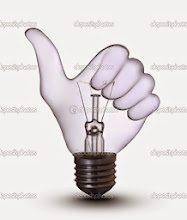P-N Junction Diode
P-N junction is a semiconductor device, which is formed by P-type and N-type semiconductor material. P-type has high concentration of holes and N-type has high concentration of electrons. Hole diffusion from p-type to n-type and electron diffusion is from n-type to p-type.
From the figure, as the free electrons move across the junction from n-type to p-type the donor ions become positively charged. Hence, positive charge is built on the N-side of the junction. The free electrons across the junction is the negative acceptor ions by filling in the holes, then negative charge established on the p-side of the junction is shown in figure above. An electric field formed by the positive ions in the n-type region and negative ions in p-type regions. This region is called diffusion region. Since the electric field quickly sweeps free carriers out, hence the region is depleted of free carriers. A built-in potential Vbi due to Ê is formed at the junction is shown in figure.
Functional Diagram of P-N Junction Diode:
Forward Characteristics of P-N Junction:
When positive terminal of battery is connected to P-type and negative terminal is connected to N-type is called forward bias of P-N junction is shown figure below.
If this external voltage becomes greater than the value of the potential barrier, approximately 0.7 volts for silicon and 0.3 volts for germanium, the potential barriers opposition will be overcome and current will start to flow. This is because the negative voltage pushes or repels electrons towards the junction giving them the energy to cross over and combine with the holes being pushed in the opposite direction towards the junction by the positive voltage. This results in a characteristics curve of zero current flowing up to this voltage point.
Reverse Characteristics of P-N Junction:
When a diode is connected in a reverse bias condition, a positive voltage is applied to the N-type material and a negative voltage is applied to the P-type material.
Where the positive voltage applied to the N-type material attracts electrons towards the positive electrode and away from the junction, while the holes in the P-type end are also attracted away from the junction towards the negative electrode. The net result is that the depletion layer grows wider due to a lack of electrons and holes and presents a high impedance path, almost an insulator. The result is that a high potential barrier is created thus preventing current from flowing through the semiconductor material.
Applications of P-N Junction Diode:
P-N junction diode is a two terminal polarity sensitive device, diode conducts when in forward bias and diode not conducts when reverse bias. Due to these characteristics the diode has various characteristics:
- Rectifiers in D.c power supply
- Demodulation circuits
- Clipping and clamping networks













Good explanation !
-Amogh
http://www.electronicsforum.in